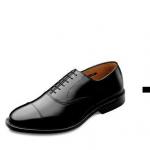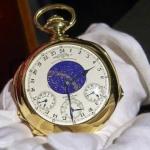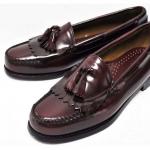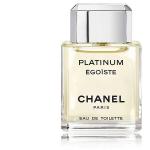Signs of good jeans
As I have repeatedly written, I am not a jeans specialist, but not so long ago I tried to study this topic more or more carefully. Of course, this article on the signs of good jeans is unlikely to be of interest to those who are well versed in jeans - and yet, for many, I think it will be very useful.
So, let's see how high quality jeans differ from ordinary, rather ordinary models.
Textile
Good jeans are made from good denim. You can roughly determine the quality of denim by its characteristics. Well, if the manufacturer indicates at least some characteristics at all; bad if only the composition is known. I would like to emphasize that denim specifications are not always indicated directly on the label of jeans, however, conscientious manufacturers usually give them on their website or in the company's online store. Experienced salespeople may also have relevant data.
What characteristics can denim have?
The weight. If the manufacturer indicates the weight of the fabric from which the jeans are sewn, this is already a good sign. The connoisseur appreciates medium and heavy denim, that is, denim with a weight of at least 12 ounces (12 oz.). Lightweight denim can be fragile, short-lived, although it is not necessarily low quality - there are quite good options, and this is a great choice for hot weather. You can read more about the weight of fabric - and denim as well. Personally, I tend to consider 12-14 oz. as the golden mean, but very heavy denim has its fans - 21-25 oz.
 Compound. All brands list it. It is believed that the best jeans are made from 100% cotton, but models with the addition of 1-5% elastane / spandex / polyurethane can also be very high quality, although they are often less durable. Some connoisseurs usually treat them with ... condescending, and sometimes even slightly contemptuous. Well, a significant proportion of synthetics in the composition (for example, 40% polyester) clearly indicates a low level of jeans.
Compound. All brands list it. It is believed that the best jeans are made from 100% cotton, but models with the addition of 1-5% elastane / spandex / polyurethane can also be very high quality, although they are often less durable. Some connoisseurs usually treat them with ... condescending, and sometimes even slightly contemptuous. Well, a significant proportion of synthetics in the composition (for example, 40% polyester) clearly indicates a low level of jeans.
Origin of cotton. Perhaps, organic cotton jeans can be ranked above jeans from cotton of "unknown" origin, but only all other things being equal. In any case, very few manufacturers indicate the origin of the raw material - and besides, as far as I know, denim connoisseurs do not attach much importance to this point. Among the well-known manufacturers of organic cotton jeans, Nudie Jeans is worth mentioning, although it should be said right away that their jeans cannot be classified as high class.

In addition, it should be noted that the origin of cotton can be assessed not only in terms of "organic" or "inorganic". The country in which cotton grew also plays a role. So, denim connoisseurs usually speak very positively about Zimbabwean cotton. There are many models made of such cotton in the assortment of the Fullcount brand.
Country of manufacture of denim. Japanese denim is the most valued. As a rule, it is high-quality, solid and durable, although it is clear that the quality of denim from different brands is still somewhat different. In addition, good jeans are made from American, Italian and Portuguese denim. Italian denim is generally more pleasant to the touch and more comfortable, but is often inferior to Japanese denim in terms of lifespan/durability. American denim can be very good.
 Some brands offering Japanese denim jeans include: Acne Studios, Chimala, Edwin, Fabric-Brand&Co., Iron Heart, Jean Shop, Naked&Famous, NN07, Nudie Jeans, OniDenim, Ron Herman, RRL, Samurai, Studio d'Artisan, Sugar Cane, Warehouse&Co. Portuguese denim is used by Universal Works, Italian - Nudie Jeans, Isaia and some other brands.
Some brands offering Japanese denim jeans include: Acne Studios, Chimala, Edwin, Fabric-Brand&Co., Iron Heart, Jean Shop, Naked&Famous, NN07, Nudie Jeans, OniDenim, Ron Herman, RRL, Samurai, Studio d'Artisan, Sugar Cane, Warehouse&Co. Portuguese denim is used by Universal Works, Italian - Nudie Jeans, Isaia and some other brands.
The country of origin of cotton in most cases differs from the country of production of denim. Let's say a brand can make jeans from Japanese denim, but the raw material for this denim is cotton grown in the US or Zimbabwe.
Denim manufacturer. It is indicated very rarely - as a rule, only when it is a really conscientious and revered firm in narrow circles. Well-known firms include Kurabo, Nihon Menpu, Kuroki, Yoshikawa Orimono (Japan), Cone Mills (USA), Candiani (Italy / more "pop" denim) and others.
 It should be noted that the Japanese origin of a fabric manufacturing company does not always mean the Japanese production of this fabric. For example, the Japanese company Kurabo has factories not only in Japan, but also in Thailand and Indonesia. Accordingly, Japanese denim (Japanese denim) is not a very unambiguous concept.
It should be noted that the Japanese origin of a fabric manufacturing company does not always mean the Japanese production of this fabric. For example, the Japanese company Kurabo has factories not only in Japan, but also in Thailand and Indonesia. Accordingly, Japanese denim (Japanese denim) is not a very unambiguous concept.
Processing types. Sanforized / unsanforized, raw / dry / pre-washed - the use of such words in the descriptions of jeans on the site / in the store is an argument in favor of the fact that the manufacturer (or seller) understands jeans. The most popular jeans in the world are pre-washed sanforized; the least popular are raw unsanforized (although some connoisseurs prefer them). Keep in mind that unsanforized jeans shrink significantly after the first wash (up to 10% shrinkage!), so be careful when choosing your size.
 Distressing. Jeans are often processed in such a way that all sorts of scuffs, stains, holes, fringes, etc. appear on them. As a rule, high-end jeans manufacturers (mostly Japanese - for example, Chimala and Kuro) try to give jeans a plausible look of worn-out clothing with such processing, while "pop" jeans are sometimes processed in such a way that they end up with a completely unrealistic appearance - such , which could never arise even after many years of wear.
Distressing. Jeans are often processed in such a way that all sorts of scuffs, stains, holes, fringes, etc. appear on them. As a rule, high-end jeans manufacturers (mostly Japanese - for example, Chimala and Kuro) try to give jeans a plausible look of worn-out clothing with such processing, while "pop" jeans are sometimes processed in such a way that they end up with a completely unrealistic appearance - such , which could never arise even after many years of wear.
It should be added that high-end jeans can be almost plain, without holes and scuffs, or faded, with a few scuffs and a couple of holes. Connoisseurs prefer the simplest solid colors of "raw" denim (raw denim), as only they acquire a unique patina over time, reflecting the lifestyle of their owner.

Selvedge denim jeans are valued above others. I wrote in detail about selvedge (selvage) in ; here I will only note that this detail is an indicator of the rather high cost of jeans (more precisely, the fabric from which they are sewn) and one of the indicators of above-average quality. Selvedge is easy to identify: turn the jeans (legs) slightly inside out and check if the inside of one of the long seams looks something like the photo below. Here are the jeans with selvedge:
 But not selvedge:
But not selvedge:
 Selvedge denim is now produced in Japan, and in Italy, and in Portugal, and in some other countries of the world. It should be noted that at present there are many selvedge jeans on the market that cannot be attributed to the highest class. Also, keep in mind that selvage stripes may not be red, but green, multi-colored, and even white.
Selvedge denim is now produced in Japan, and in Italy, and in Portugal, and in some other countries of the world. It should be noted that at present there are many selvedge jeans on the market that cannot be attributed to the highest class. Also, keep in mind that selvage stripes may not be red, but green, multi-colored, and even white.
Here are some brands offering selvedge jeans: A.P.C., Chimala, Edwin (not all models), Fabric-Brand&Co., Fullcount, Iron Heart, Isaia (not all models), Jean Shop, Kuro, (not all models, only expensive ones), Naked&Famous, NN07, OniDenim, Orslow, Rag&Bone, Ron Herman, Roy, RRL, Samurai, Simon Miller, Studio d'Artisan, Sugar Cane, Telasson, The Workers Club, Tom Ford, Uniqlo, Universal Works, Valentino, Visvim, Warehouse&Co.
Stitch density
High-end jeans tend to have a higher stitch density than lower-end jeans. For example, in very good jeans, the stitch density can reach up to 5 stitches / centimeter (seams on the pockets and waist), while in ordinary models it is 3 stitches / centimeter (sometimes even 2.5). Interestingly, even selvedge denim jeans can have a low stitch density - and this is one of the details that distinguishes them from really high-end models.
 Stitch density often varies depending on the particular seam/location of the jeans.
Stitch density often varies depending on the particular seam/location of the jeans.
Features of the seam on the belt
Ideally, the "fat" seam that runs along the bottom of the waistband of the jeans should completely go into the multi-layered areas at the edges, that is, go around the entire circumference of the belt. Here is an example of such a seam:
![]() And here is the opposite example, more budget jeans. The "fat" seam does not go along the entire length:
And here is the opposite example, more budget jeans. The "fat" seam does not go along the entire length:
 It is worth remembering, however, that even if this “fat” seam is full-fledged, this does not mean that jeans are necessarily of the highest class. In addition, on some very decent jeans, the “fat” seam almost does not go into multi-layered areas.
It is worth remembering, however, that even if this “fat” seam is full-fledged, this does not mean that jeans are necessarily of the highest class. In addition, on some very decent jeans, the “fat” seam almost does not go into multi-layered areas.
Seam "chain"
High-end jeans are often hemmed at the bottom with chain-stitching. From the outside, such a seam looks completely ordinary, but from the inside it can be seen that the stitches form a kind of dense chain. Chain-stitching has no practical advantages (and even more so, this stitch is less durable), but is a sign of the manufacturer's attention to detail and tradition. Such a seam is performed by a special machine; appearance may be slightly different (depending on the machine).

 And this is what a regular seam looks like from the inside (not a “chain”):
And this is what a regular seam looks like from the inside (not a “chain”):
 Some brands that offer chain-stitched jeans include: Fullcount, Iron Heart, Kuro, Levi's (not all models, only expensive ones), NN.07, Orslow, Rag&Bone, RRL, Samurai, Studio d'Artisan, Sugar Cane, Telasson, Uniqlo, Warehouse&Co.
Some brands that offer chain-stitched jeans include: Fullcount, Iron Heart, Kuro, Levi's (not all models, only expensive ones), NN.07, Orslow, Rag&Bone, RRL, Samurai, Studio d'Artisan, Sugar Cane, Telasson, Uniqlo, Warehouse&Co.
Belt loops
On many high-quality Japanese jeans, belt loops are sewn on special old-style machines, and therefore seem somewhat bulkier, more embossed than on standard mass-market jeans (this is especially noticeable during tactile “research”). Over time, the central (raised) part of such a loop fades faster than the edges. Of course, such a nuance does not play a practical role.


Reinforcing rivets on back pockets
Another feature of high-end Japanese (and American) jeans also plays a practical role. We are talking about hidden rivets on the back pockets, which are installed to give the pockets increased strength. The installation of these rivets is only possible by hand, so they are found only on expensive jeans (Fullcount, Kuro, Roy, Iron Heart, etc.). From the outside, these rivets are not visible.

Italian things
Italians like to supply jeans with some details atypical for this piece of clothing. In particular, this is a sewn-in belt (), a horizontal fastener not on one, but on two buttons / bolts, as well as a holder for a belt buckle (). Inside the jeans there may be "curly" contrasting seams, the lining of the pockets may be patterned or colored.


 Jeans with a sewn belt are offered by Isaia (almost all models) and Incotex (single models). Jeans with a belt hook holder are available from Gents' Stuff by Harridge, Jacob Cohen, Kiton, PT05.
Jeans with a sewn belt are offered by Isaia (almost all models) and Incotex (single models). Jeans with a belt hook holder are available from Gents' Stuff by Harridge, Jacob Cohen, Kiton, PT05.
Read more about Italian jeans, and compare Italian jeans with Japanese ones.
Clasp. accessories
High-quality jeans can be supplied with both zip fasteners (zip fly) and fasteners with metal bolts (button fly). Perhaps the second option on high-end jeans is much more common. If we talk about zippers, then one of the best (and most famous) manufacturers of them is YKK. In addition, very good zippers are made by riri.
 Rivets and other fittings can be made from steel or cheap alloys, as well as from brass, copper or even silver (like some Jacob Cohen models, for example). Of course, silver, copper or brass fittings can be considered one of the hallmarks of good jeans, but they are far from the most important; very good jeans can be equipped with simpler fittings. Sometimes it can be artificially aged fittings or fittings, which, so to speak, are prone to rapid corrosion.
Rivets and other fittings can be made from steel or cheap alloys, as well as from brass, copper or even silver (like some Jacob Cohen models, for example). Of course, silver, copper or brass fittings can be considered one of the hallmarks of good jeans, but they are far from the most important; very good jeans can be equipped with simpler fittings. Sometimes it can be artificially aged fittings or fittings, which, so to speak, are prone to rapid corrosion.

Country of Origin
Perhaps the best jeans are made in Japan, but very worthy copies are also made in the USA, Great Britain, Italy. In addition, quite decent models - above average, although not top - can be made in China, Tunisia and some other countries.






